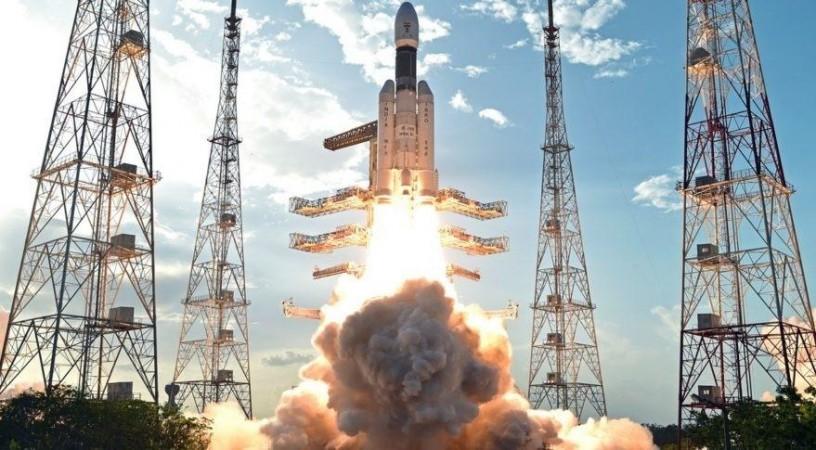The anticipation mounts as the countdown for ISRO's GSLV F12/NVS-01 launch mission commences, setting the stage for a momentous liftoff on Monday, May 29, 2023, at 10:42 hours IST from SDSC-SHAR, Sriharikota.
Proudly standing tall at the second launchpad in the Satish Dhawan Space Centre, Sriharikota, the GSLV rocket eagerly awaits its mission: to propel the 2,332 kg navigation satellite NVS-01 into a Geosynchronous Transfer Orbit (GTO).
The meticulous preparations unfold in the final phase, as the launch vehicle is fueled with liquid and cryogenic propellants, and crucial system checks are meticulously performed. This temporary parking orbit serves as a stepping stone for the satellite, which will utilize its onboard propulsion systems to execute orbit-raising maneuvers and reach its designated orbit.

This landmark launch marks ISRO's fourth mission in the calendar year 2023, adding yet another accolade to their repertoire. Already, they have successfully launched the compact SSLV rocket, the versatile PSLV rocket, and the mighty LVM3 rocket. With the GSLV taking center stage, ISRO achieves a remarkable feat by launching all four operational vehicles within a mere four-month span.
GSLV-F12/NVS-01 mission is set for launch on Monday, May 29, 2023, at 10:42 hours IST from SDSC-SHAR, Sriharikota. https://t.co/bTMc1n9a1n
— ISRO (@isro) May 23, 2023
NVS-01 is first of the India's second-generation NavIC satellites ?️ that accompany enhanced features.
Citizens can register at… pic.twitter.com/OncSJHY54O
NVS-01 represents the pioneering satellite in the second-generation navigation series crafted by ISRO's UR Rao Satellite Centre in Bengaluru.
Currently, India relies on its Navigation with Indian Constellation (NavIC) satellites to provide essential navigation, positioning, and timing services for both civilian and defense applications across the Indian mainland and beyond its borders, encompassing a radius of 1,500 km.

"The NVS series of satellites will enhance and fortify the capabilities of NavIC, incorporating additional L1 band signals to expand the scope of services. Notably, NVS-01 will also carry an indigenous atomic clock, a significant milestone," said ISRO.
Previously known as the Indian Regional Navigation Satellite System (IRNSS), the NavIC series of satellites comprise a series of eight, were deployed in orbit between 2013 and 2018 using the reliable PSLV rockets. Each first-generation NavIC satellite weighed 1,425 kg and housed foreign-origin atomic clocks.
Watch the stream live here:
"Existing NavIC fleet is of 7 sats, but only 4 are operational...replacing the 3 defunct ones won't be prudent, as existing 4 will be defunct by then..Instead, we are launching a fleet of 5 next-gen NavIC sats..NVS-01 & then 4 more will follow(two per year)," said ISRO Chairman Dr. S.Somanath.
These satellites boasted two vital payloads: the navigation payload, responsible for transmitting signals used in position, velocity, and time determination, and the ranging payload, equipped with a C-band transponder facilitating precise range measurements of the satellite.














